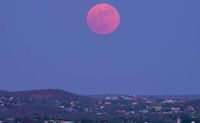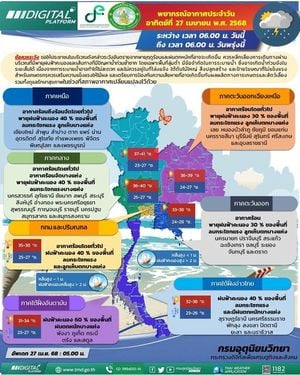The skies are all set to light up on April 12, 2025, with the first full moon of spring, traditionally known as the Pink Moon. This celestial event will peak at 8:22 p.m. Eastern Daylight Time (EDT), which corresponds to 5:52 a.m. Indian Standard Time (IST) on April 13. While the name might suggest a rosy hue, the moon will appear in its usual white-golden glow, symbolizing the arrival of spring and the blooming of early flowers.
The Pink Moon, a term derived from the blooming of the creeping phlox or moss pink wildflower, is rich in cultural and spiritual significance. In North America, this name reflects the natural changes that occur with the onset of spring. Notably, the Pink Moon will also be a micromoon, meaning it will be at its farthest point from Earth, resulting in a slightly smaller and dimmer appearance compared to an average full moon. This year's Pink Moon will be the smallest full moon of 2025.
As the moon rises in the constellation of Virgo, observers can locate it near Spica, the brightest star in that constellation. To enhance the viewing experience, it is recommended to find a location with minimal light pollution, such as open fields or hilltops. The best time to catch a glimpse of this stunning lunar event is during twilight around sunset on April 12, when the moon appears larger due to the "moon illusion." This phenomenon occurs when the moon is near the horizon, tricking the brain into perceiving it as larger than it actually is.
For those in India, the Pink Moon will be visible on April 13, 2025, at 5:00 a.m. IST. The full moon period will start at 3:21 a.m. IST on April 12 and continue until 5:51 a.m. IST on April 13. This offers a window of opportunity for skywatchers to enjoy the beautiful sight of the Pink Moon.
The name "Pink Moon" has its roots in Native American traditions, specifically from the Algonquin Nation, which used lunar names to track seasonal changes. The creeping phlox, known for its vibrant pink flowers, blooms around this time, marking the transition from winter to spring. Other names for this full moon include the "Breaking Ice Moon" and the "Egg Moon," each reflecting themes of renewal and growth.
In addition to its cultural significance, the Pink Moon also holds religious importance. For Christians, it is known as the Paschal Moon, as it helps determine the date of Easter, which will fall on April 20 in 2025. Similarly, in Hindu culture, the Pink Moon coincides with Hanuman Jayanti, celebrating the birth of Lord Hanuman, while Buddhists observe it as Bak Poya, commemorating a significant event in Buddha's life.
As the Pink Moon rises on April 12, it will be about 30,000 miles farther from Earth than the largest supermoon of the year, which will occur in November. This micromoon is expected to appear roughly 14% smaller and about 30% dimmer than a supermoon. Despite these differences being subtle for the casual observer, they can be noticed through photography.
For the best viewing experience, NASA suggests using binoculars or a telescope to observe details such as craters and shadows on the lunar surface. Observers are encouraged to take photos, capturing the moon's beauty and any foreground elements for dramatic effect.
Skywatchers across the globe, including those in Central and South America, might also experience an additional spectacle as the Pink Moon briefly covers Spica in a phenomenon known as occultation.
As we approach this celestial event, it’s important to remember that while the Pink Moon may not actually appear pink, it represents the vibrant renewal of life that spring brings. So mark your calendars for April 12, 2025, and prepare to witness this beautiful lunar phenomenon!







